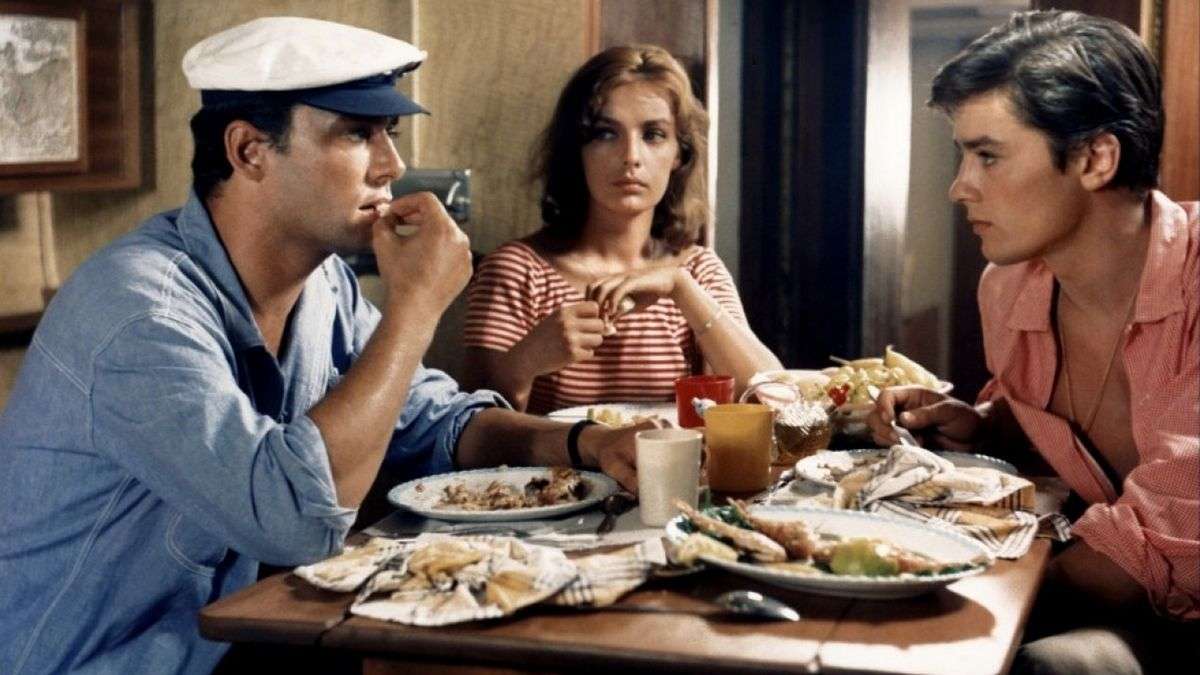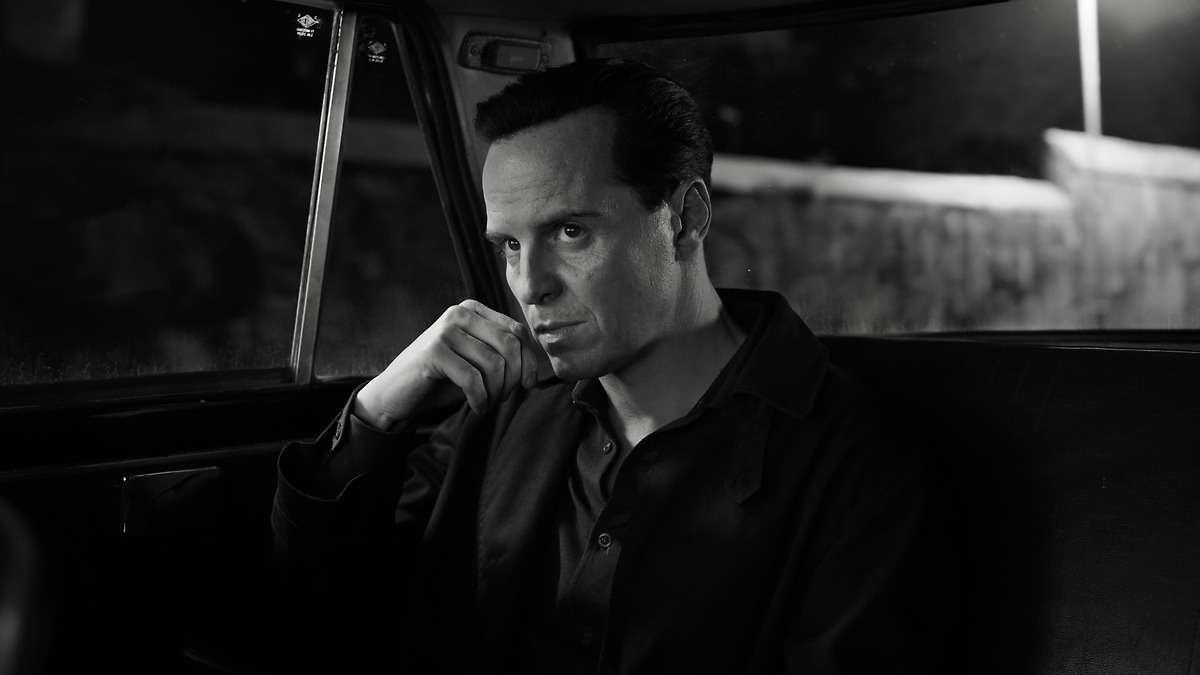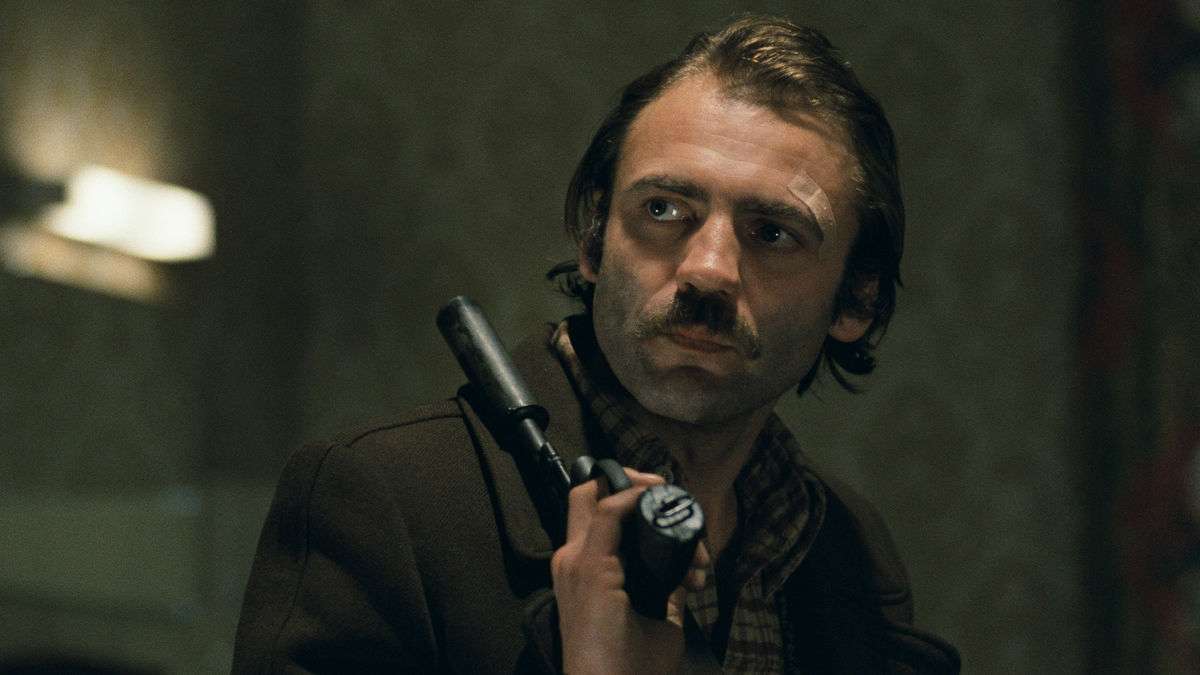
[ad_1]
From 1955 to 1991, novelist Patricia Highsmith wrote “Ripliad,” a sequence of 5 novels starring what would develop into her most well-known character, Tom Ripley. The completely amoral con man is a suave, agreeable, and manipulative man devoid of any conscience. However what makes Ripley so astonishingly fascinating is that it’s primarily Highsmith taking a stab at F. Scott Fitzgerald’s The Nice Gatsby and simply keen to point out Gatsby in the direction of amorality taken virtually an excessive kind—a person wanting to succeed in a station in life, fulfill their deep-seated ambition, and be keen to lie and even kill to get there. And maybe that’s the reason Highsmith’s first trilogy of novels has been tailored a complete of 5 occasions on movie and now as a Showtime-produced miniseries, streaming on Netflix. There’s a unusual attraction in the direction of the character that enables his sociopathy to be ignored and even accepted as gospel.
One can surmise that as a result of Highsmith explicitly writes Ripley as a person dreaming of being wealthy and intent on utilizing each trick to realize it, the variations themselves permit the viewers to be sucked into the sweetness and “trip porn” nature of the narrative. However since you are fully witnessing the occasions from the viewpoint of the sociopath (for probably the most half), you might be rooting for him to get away and even watching in bemusement as Ripley tries to take care of a semblance of curiosity in his life as soon as he achieves the wealth he so desired.
Caveat: –
- This may be a rating of all of the official variations that includes Ripley, immediately adapting the novels and never essentially being impressed by one of many movies.
- This rating could be primarily based on the standard of the films and never judging primarily based on the standard of the Ripley interpretation as a result of that might entail a totally separate record.
- Only for enjoyable, a Ripley interpretation rating can also be added below every entry
Dishonorable and Honorable Mentions –
- Saltburn (Dir – Emerald Fennell) – Primarily Fennell’s homage to the primary novel in addition to the 1999 movie “The Proficient Mr. Ripley,” Fennell virtually admirably doubles down on the overt sexuality discussions that the 1999 movie handled subtly, whereas the books tiptoed round, referencing them. Nevertheless, within the technique of subverting (a trademark that Fennell had been complicit in overusing in her two-film previous filmography), she manages to elicit sympathy for the elite and ultra-rich and even chooses to depict Oliver Fast’s true intentions as a type of earth-shattering twist throughout the narrative, which fully undermines not solely Fennell’s movie as an entire but in addition shows a basic misunderstanding of Highsmith’s supply supplies.
- Naan (Dir—Jeeva Shankar)—Shankar’s 2012 Tamil crime thriller, which starred composer Vijay Antony in his appearing debut, is a plotty and twisty crime thriller that may be very loosely tailored from the 1999 movie “The Proficient Mr. Ripley” somewhat than a direct interpretation of any of the supply materials. That is the first motive it stays within the honorable mentions class.
With out additional ado, and with many of the honorable (and dishonorable) mentions out of the way in which, allow us to leap into the Ripley variations and rank them –
6. Ripley Beneath Floor (2005)

The one official adaptation of Highsmith’s second novel of the identical title, Spottiswoode’s adaptation can also be the one one set through the trendy period. It follows Tom Ripley as a younger, 20-something actor. When considered one of his mates, a younger upstart artist, will get killed in an accident, the remainder of the group of mates, below Ripley’s urging, hatch a scheme to proceed making work below their pal’s title, and as is anticipated, the plan begins to disintegrate.
Bearing in mind how a lot the novel reads like a farcical tackle the wealthy and elite artwork scene, “Ripley Beneath Floor” is a enjoyable film, fully leaning into the flighty and campy nature of the supply materials. For all Ripley variations, the central casting and the aesthetics are downright important. Barry Pepper as Tom Ripley is probably the most 2005 model of a captivating scumbag with immorality in his veins, however he lacks any of the sociopathies.
The ethical, emotional complexities, and sophistication commentary of all of the Ripley variations are lacking right here. That is generally a black comedy veering too far into goofy and slapstick territory. The appearing, too, feels a product of its time, with a visible palette resembling a telefilm. It’s in sharp distinction to the supporting forged of Alan Cumming, Tom Wilkinson, and Willem Dafoe, who really feel overqualified for the film they discover themselves in.
5. Ripley’s Sport (2002)

The second adaptation of Highsmith’s novel of the identical title, “Ripley’s Sport,” follows Tom Ripley, now residing fortunately together with his girlfriend at a villa with Veneto. A go to from an previous affiliate of the Berlin underworld pulls Ripley again into a lifetime of crime when he’s requested to kill a rival. Ripley, with pettiness complementing his data of human nature, takes this opportunity to attract an harmless image framer, Jonathan Trevanny, into this lifetime of crime, exploiting his impending dying on account of a uncommon illness. However what if Ripley begins growing a conscience as a lot as he might conceive one?
The one case the place the efficiency elevates virtually all the flaws of the fabric is just because Malkovich’s tics and his delicate supply of dialogue imbued with heavy snark embodies a near-perfect encapsulation of Tom Ripley as had been imagined by Highsmith. Malkovich is a grasp at flipping from jocular to sarcastic, from boorish to murderous in a dime. His sociopathy is simply matched by his ease at resorting to homicide and his acknowledgment of the strangeness of his amorality. It offers the film a spark whereas Cavani strips it down and tries to make an enticing espionage thriller resembling a ’60s Chilly Conflict-era movie.
The flaw is within the supporting forged, particularly in Dougray Scott’s depiction of Trevanny. The person’s vulnerability and fish-out-of-water depiction solely serve a bland aftertaste. Extra importantly, there’s a lack of chemistry between him and Ripley. Cavani’s want to keep a semblance of morality inside Trevanny as an alternative of getting Ripley’s affiliation corrupt him from the within out blunts the tooth of the narrative itself. The flaw is compounded by the third act going at the least 10 minutes too lengthy, including an pointless and unimaginatively designed shootout sequence that solely appears like an epilogue added as an afterthought.
4. Purple Midday (1960)

The primary adaptation of Patricia Highsmith’s The Proficient Mr. Ripley (1955), Clement’s 1960 movie Plein Soleil (Purple Midday), follows Ripley as we discover him already quick mates with Philip Greenleaf and his fiance Marge. However when Greenleaf’s cruelty, hearkening to his extraordinarily privileged perspective, hits Tom a bit too near residence, Ripley kills him, resulting in a sequence of occasions the place Ripley manipulates and dodges Greenleaf’s household and the authorities as he tries to take over Greenleaf’s identification and his life.
Ripley as a personality, in addition to a sequence of novels being tailored, rely very a lot on the balancing act between the aesthetics—the travelogue nature of the movie with its lush cinematography (Clement’s enhancing remembers the model of the French New Wave)—and the insidious dynamics between three engaging individuals, and naturally, the bubbling magnificence of 1 Alain Delon. Delon’s handsomeness provides to the mystique, giving the film an added layer of protecting from among the decisions made within the screenplay whereas adapting Highsmith’s supply materials.
The movie’s ending can also be a studio-mandated one, making certain that Ripley will get caught for a mistake that this process-oriented, fastidiously calibrated interpretation might by no means have made. Maybe Delon is just too good-looking for Ripley, however he additionally manages to convey out spurts of uncertainty and moments of triumph briefly flashes over his Dorian Grey-like visage. However “Purple Midday” can also be fascinating exactly due to how a lot Hitchcockian affect the mischievousness disguising the perversity of evil feels, virtually lifted from Highsmith. Nevertheless, Clement can also be adapting an completely American supply materials and stripping the nuances of the category divide in addition to excising its queer coding, making it a easy French noir, and that’s the place it falters.
3. The Proficient Mr. Ripley (1999)

Maybe probably the most well-known adaptation of “The Proficient Mr. Ripley,” in addition to probably the most celebrated, Anthony Minghella’s movie follows Tom Ripley (Matt Damon), a calculating younger man who’s employed by a rich US shipbuilder to convey again his wayward playboy son Dickie Greenleaf (Jude Regulation). Ripley slowly begins to ingratiate himself into the lives of Dickie and his girlfriend Marge (Gwyneth Paltrow), however jealousy, in addition to need, urges Ripley to be drawn right into a sport of duplicity, lies, and homicide.
Minghella’s adaptation of Highsmith’s novel will get the aesthetic essentialness of “Purple Midday” down pat. Jude Regulation’s virtually incandescent presence as Dickie Greenleaf emphasizes and codifies Ripley’s sexuality. Minghella doubles down on homoeroticism, however the course of of constructing Ripley weak and accessible results in a lack of the chilly, psychopathic, amoral fringe of the character. Within the truest sense of the phrase, Minghella manages to craft a Hitchockian travelogue, however Ripley right here is on a journey to acknowledge his sociopathy, the benefit of homicide, and eventually, the compulsiveness of mendacity as a necessary component of working a con.
Damon’s portrayal captures the jilted lover, the emotionally wrought model of Ripley. It’s a unbelievable efficiency, however Ripley’s interpretation is dependent upon the model you see first, and Damon’s portrayal is likely one of the extra divergent ones for somebody who has seen the Delon model. However “The Proficient Mr. Ripley” as a film is great on virtually each different entrance, particularly within the supporting forged. It is a stupendous ensemble, bit roles essayed by actors who’re leads in their very own proper and producing memorable performances out of primarily nothing roles (Philip Seymour Hoffman as Freddie Miles).
2. Ripley (2024)

The most recent adaptation is once more one of many variations of the novel “The Proficient Mr. Ripley.” However the query as as to if the primary guide required one other adaptation, the query additionally arises as as to if it might escape the shadow of the 1999 movie adaptation. And whereas such a excessive rating might scream recency bias, the reasoning is way easier—the miniseries is simply that good.
The best illustration of a Ripley adaptation could be the general faithfulness to the tonality and amorality of the Ripley novels, with the interpretation of Ripley resembling rather more of Alain Delon. It’s inconceivable to evoke Delon’s sculpted magnificence, however Steven Zaillian does the following smartest thing. Zaillian takes top-of-the-line cinematographers within the enterprise, Robert Elswit (There Will Be Blood), and makes use of him to craft vistas, juxtaposing the stoniness and grandeur of the structure with the splendorous surroundings. However Elswit shoots the present in stark black and white, with chiaroscuro completely calibrated.
The fantastic thing about each body and each shot bestows a stage of sinister, mysterious foreboding that’s in keeping with this interpretation of Ripley. Andrew Scott performs Ripley with all of the intricacy of a superbly calibrated clock. An opportunistic, charismatic psychopath whose smile doesn’t attain as much as his eyes and whose tonality can shift between genial and terse inside a dime. However there’s additionally narcissism there, with Ripley not directly praising himself in letters pretending to be Greenleaf.
Connecting to the character is simply attainable via the machinations of the plot; Hitchcockian suspense permits you to wonder if Ripley’s luck will lastly run out. Course of-oriented storytelling permits stress to be ratcheted up, be it within the clean-up of the crime scenes or within the investigation itself. The miniseries format permits for a extra exhaustive exploration. Nonetheless, Scott’s portrayal permits you to take into stride among the extra baffling decisions, largely the characters of Dickie Greenleaf and Freddie Miles.
The alternatives exhibited by Zaillian within the depiction of those performances vary from curiously bland to unusually baffling. The miniseries is an intricately made, exactly plotted piece of storytelling that may very well be considered an artwork piece due to the space the present maintains between the principle character and the viewer. On the very least, that elicits admiration.
1. The American Buddy (1977)

The primary adaptation of Patricia Highsmith’s “Ripley’s Sport,” with plot parts of “Ripley Beneath Floor,” additionally borrowed to supply the added context within the movie “The American Buddy” by Wim Wenders, is a curious beast in its personal proper. The Ripley efficiency by Dennis Hopper is so ingrained in Hopper’s tics and his total character that the divergence is sort of stark. This record, nonetheless, is a rating of one of the best variations, judging the cinematic high quality somewhat than the iteration of Ripley within the adaptation, and from that perspective, “The American Buddy” is maybe a few inches in need of an art-house noir masterpiece.
Wenders makes the plot virtually indiscernible, letting the movie luxuriate within the structure and the colours. The juxtaposition of largesse and desolation that’s emblematic of the German New Wave, vivid main colours clashing and intermingling with the sterility and griminess of modernity, is much like the dilemma confronted by Jonathan Zimmerman. He’s the unwitting pawn in a sport throughout the underworld, exploited by his terminal sickness and promise of an extension of life to take up the job of a contract killer solely due to a perceived slight.
Wenders cleverly put Ripley out of our sight, placing Zimmerman, performed with soulful charisma by Bruno Ganz, because the ethical middle. By means of Ganz, we’re invited to witness the corruption of Zimmerman as evil touches him, pulling him deeper into the attention of the storm by Ripley himself. One can argue that Hopper’s portrayal of Ripley is much less of a easy, suave psychopath and extra of a playful, coked-up fiend with a mischievous streak. However as a personality so intertwined with evil and but open sufficient to ask chaos into well-laid plans purely for his pursuits, Hopper’s portrayal of Ripley is totally on level.
Wenders is content material to skip over plot beats in favor of fashion and ambient rating, intent on homaging noir and Americana in all their auditory and visible splendor. He’s, nonetheless, intent on conserving the nationality intact, as evidenced by the naturalistic dialogues exchanged by toggling between three languages based on the characters’ comfort. The depiction of the essentialness of nationality is as vital as its “corruption.” Maybe the “American” within the title is extra of a logo of American affect exerting itself throughout the German artwork kind.
Learn Extra: 15 Finest TV Reveals Primarily based on Motion pictures You Should Verify Out
[ad_2]
